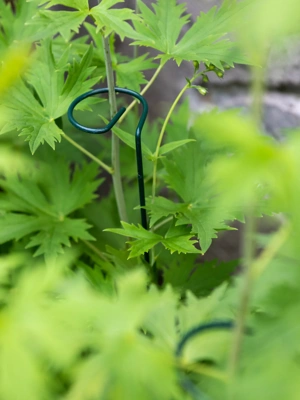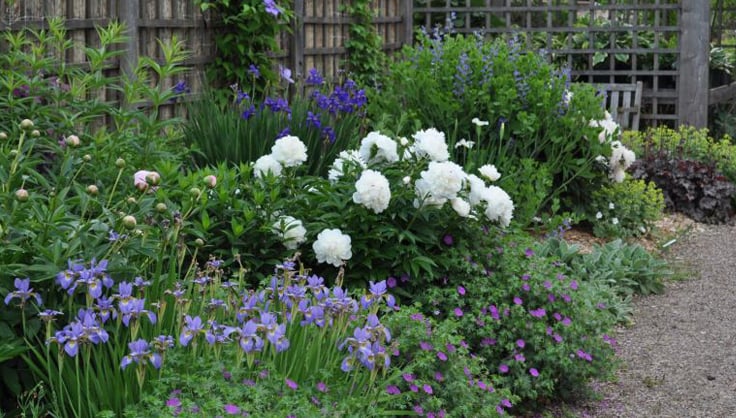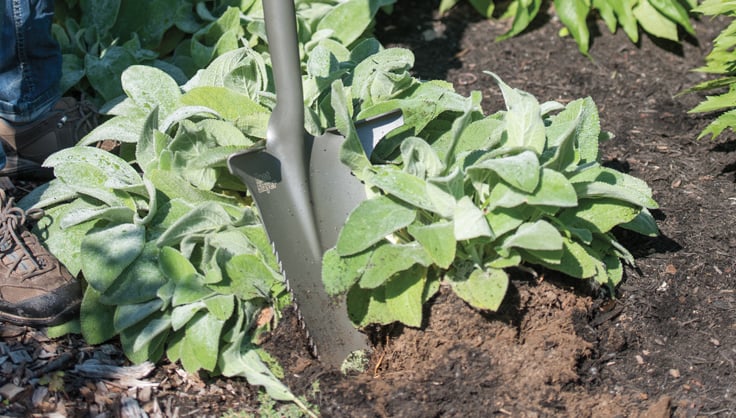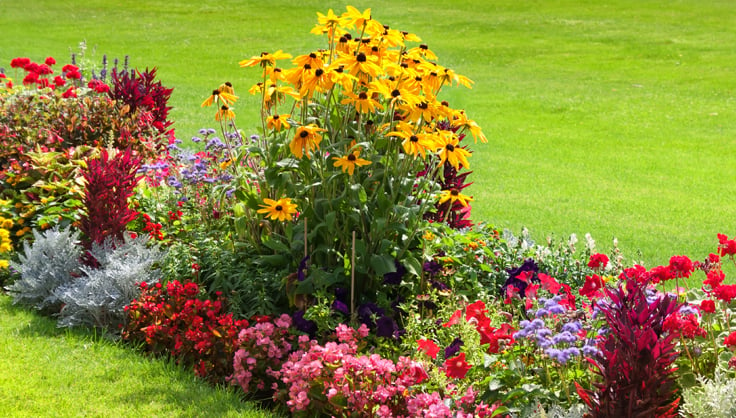How to Grow Irises
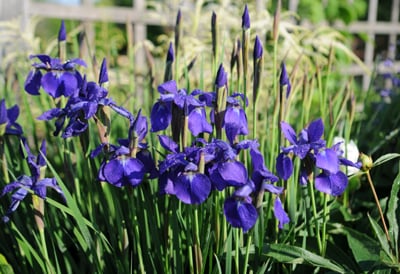
Irises are one of the earliest blooming and easiest perennial flowers to grow. Most of the more than 300 species worldwide are hardy throughout the U.S. and are widely adapted to various soil and sun conditions. By combining different types of irises, you can have them in bloom from early spring right into the summer. And if you add a few repeat-blooming bearded irises, you'll also enjoy flowers in late summer and early fall.
The show begins with dwarf irises (Iris reticulata), which are among the first bulbs to bloom in spring, They are followed by the late-spring and early-summer varieties, which bloom in this general order:
- Bearded irises (also known as German Irises)
- Siberian irises
- Louisiana irises
- Japanese irises
- Dutch irises
Iris Types
Dwarf Irises (I. reticulata and I. danfordiae): These irises grow from bulbs planted in fall. They produce 6-inch-tall, blue, yellow or purple flowers in early spring in zones 4 to 9. Over the years, these bulbs will naturalize into nice clumps of bloom; just be sure to plant them in a well-drained location.
Bearded irises (Iris germanica and hybrids): Bearded irises, also known as German irises, have a fleshy root that's called a rhizome, which grows right at the soil surface. The flower stalks range in height from 8 to 40 inches, depending on the variety, and are hardy in zones 3 to 9. Cultivars are often divided into groups by height, ranging from dwarf bearded to tall bearded. Blooms come in a range of colors, and the plants have stiff, upright leaves. All make good cut flowers. In recent years, fragrant varieties have become available. Some varieties, called "reblooming irises," bloom in early summer, followed by a repeat in late summer or fall. In mild climates, they might repeat more than once. Bearded irises are typically planted in late summer or early fall.
Siberian irises (I. siberica): Siberian iris plants grow to a height of 2 to 4 feet tall and are hardy in zones 3 to 9. They feature mostly blue, white and violet flowers and have tall, grass-like foliage. Siberian irises grow well in cool, wet conditions and, though they thrive in full sun, they can also tolerate some shade. Plant about 1 inch deep in full sun to part shade. Divide in late summer, but only when the center of the clump has stopped growing.
Louisiana irises (I. fulva, I. giganticaerulea and I. brevicaulis): Hailing from the Gulf Coast, these 2- to 4-foot-tall irises are water lovers and will be happy growing at a pond's edge or a wet spot in your yard. They also grow well in acidic soils. They're rot-resistant, hardy in zones 5 to 9, and feature a broad range of flower colors, including a true red. Foliage is tall, upright and sword-like.
Japanese irises (I. ensata): Like Louisiana irises, this species thrives in wet, acid, mucky soils. For instance, you can grow them along the edge of a pool or stream, or in a partially submerged pot in a water garden. They're hardy in zones 5 to 9, producing 2- to 3-foot-tall flower stalks with a range of flower colors from white to lavender. Foliage is ribbed and upright. Japanese irises have the largest flowers of the iris species. Once the plant has formed a large clump, it can be divided.
Dutch hybrids (I. hollandica): These irises — also called Dutch irises — are perfect for cutting gardens. Often grown as annuals, Dutch iris hybrids grow from bulbs that can be planted in fall (where hardy, zones 5 to 9) or spring. Orchid-like flowers bloom from late spring to early summer. This group of irises has an especially wide range of colors and patterns. Unlike the foliage on other types of irises, these hybrids have grass-like leaves. Plant in full sun to full shade, 4 inches deep. Tip: Zone 5 gardeners should add a 2-inch layer of mulch in fall.
Dividing Irises
Healthy iris plants may become crowded and need dividing after 3 to 4 years. A decrease in blooms usually indicates that it is time to divide. Divide bearded irises in summer, roughly two months after blooming. Other irises are best moved in early spring or fall.
Before dividing bearded iris, cut back the foliage to one-third its original height. Dig the clumps and separate healthy new rhizomes from the older, less-productive rhizomes toward the center of the clump. Discard any rhizomes with holes (from insect damage, see Iris Borer, below) or soft spots. Cut the new rhizomes so each has at least one set (fan) of leaves. Plant them as described above, leaving 12-18 inches between rhizomes.
Other irises (such as Siberian and Japanese) should be completely dug up and then the rootball can be divided using a sharp spade or knife. Discard any dead or weak areas and then replant roughly half as much plant as you removed.
Iris Borer
The most serious bearded Iris pest is the iris borer, which is usually a problem confined to gardens east of the Rockies. The eggs overwinter on iris leaves and hatch in spring, tunneling into the leaves and eventually burrowing to the rhizome. The leaves of infected plants have yellow streaks and detach easily from the rhizome. The rhizome may be mushy or have small holes from burrowing larvae.
To control iris borer, foliage and debris around the plants should be removed in the fall. Discard any infected rhizomes when dividing. Remove and destroy any infected foliage that appears during the growing season.
Last updated: 06/28/2023
Print this Article:
Related items
Related Articles
Get the Dirt
Stay up to date on new articles and advice. Please fill out the information below.

